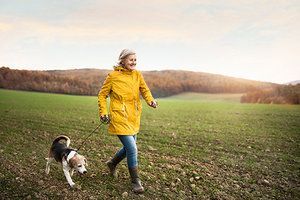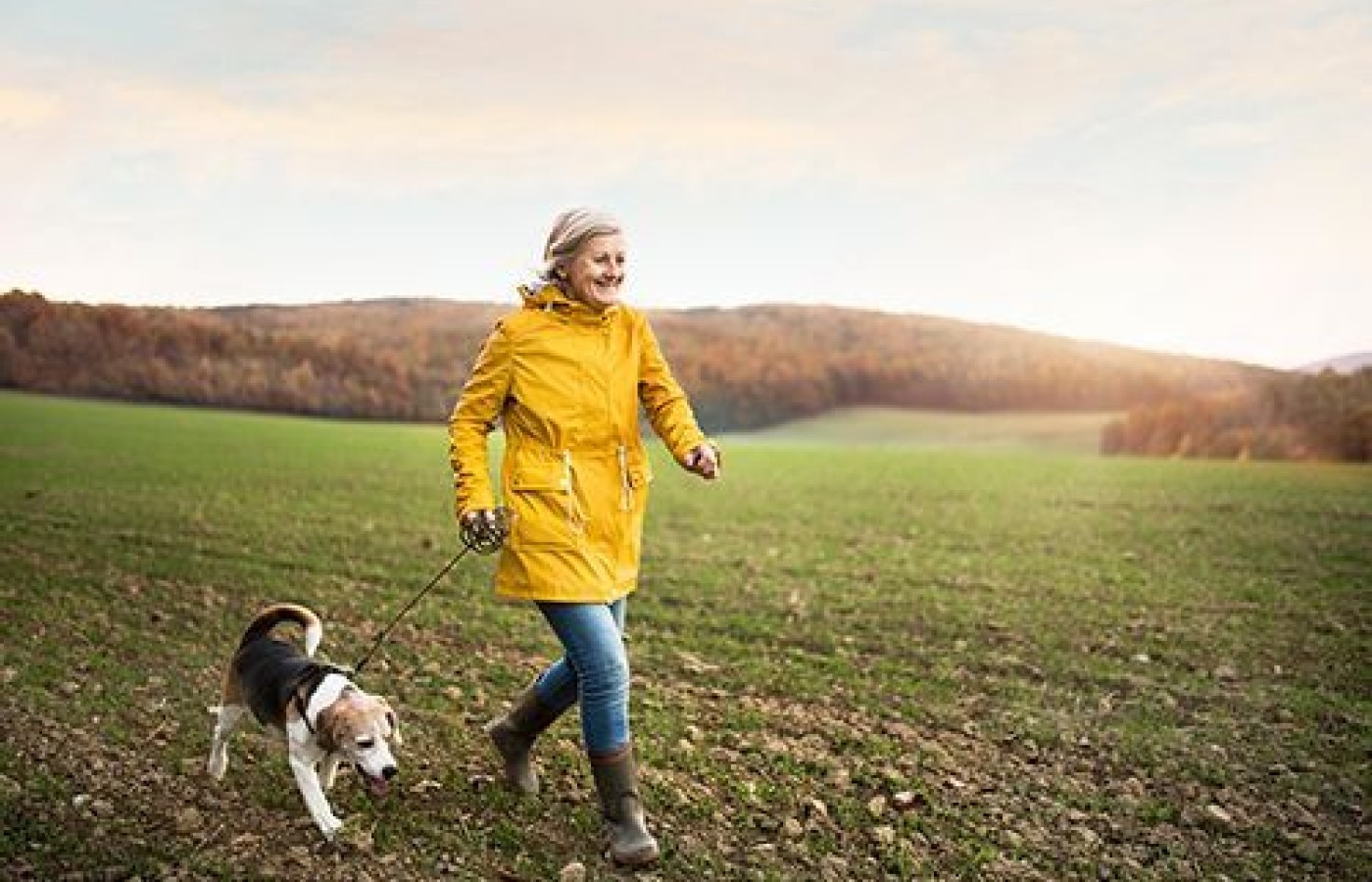Whether you accept it, avoid it or live somewhere in between, insurance coverage has become a defining issue for our profession. Patients increasingly expect to use their benefits, practitioners want to be compensated fairly for their time and expertise, and the system itself remains – at best – fragmented. The encouraging news is that coverage has expanded in meaningful ways. The challenging news is that reimbursement, across the board, remains inadequate.
Lead Patients to the Fountain (and Foundation) of Youth
Overcoming Objections to Exercise in Your Patients Who Need It the Most
We're all seeking the fountain of youth and marketers are capitalizing on it. (Global demand for anti-aging products, treatments and services was valued at 140.3 billion in 2015, according to Zion Market Research.1) The truth is there is no magic pill or cream to prevent aging, but there's something that comes darn close: exercise.
Exercise can slow some of the changes we regard as "inevitable" with aging; and can also help those who are already in the geriatric population regain strength, health and vitality.
It's also never too late to start. New research from the Lifestyle Interventions and Independence for Elders (LIFE) study found that sedentary individuals between the ages of 70-89 vastly improved their function after enrolling in a fitness program (walking and walking-based strength, flexibility and balance training). In addition, those who participated in at least 48 minutes of physical activity a week showed an impressive reduction in their disability risk.2
And this is just the latest in the growing wealth of research that supports the value of aerobic and resistance exercise, especially in the geriatric population. Improvements are seen in weight and body composition, greater insulin sensitivity, decreased falls / improved balance, better psychological health, less frailty and improved function. With exercise, resting blood pressure lowers, and there is a reduction in the risk of all-cause mortality.3-5 Studies also have shown that the stronger the back and leg muscles are, the higher the bone density is in the region.7
These benefits are so widespread that they should encourage us to recommend exercise to all our elderly patients. However, both doctors and their patients often hesitate to pursue exercise as part of a care plan due to several concerns, namely hypertension / atherosclerosis, osteoarthrosis and deconditioning / low muscle mass.
We've all heard it before: "I'm too old to start exercising, doctor." "I'm too frail." "My joint pain is too great." "But what about my heart?" Ironically, the very same concerns that "prevent" the patient from exercising can actually worsen with lack of mobility, which only fuels a cycle of health and fitness decline.
Here's what you and your patients need to know in order to overcome the roadblocks in our quest for the fountain of youth.
Hypertension / Atherosclerosis
Hardening and constriction of the arteries cause a decrease in blood flow, especially to the extremities. The heart responds by increasing blood pressure, trying to force the blood through the restricted areas. When resting measurements are consistently above 140 mmHg (systolic) and/or 90 mmHg (diastolic), the patient has hypertension.
Some patients will need medication to control their high blood pressure, especially in the higher age ranges. While these drugs do decrease the likelihood of strokes and heart attacks, many patients are hesitant to exercise and become even more sedentary.
There is good evidence that exercise is not contraindicated and is actually beneficial – and recommended – for patients taking blood pressure medications.8 Exercise of lower intensity reduces the risk of injury and cardiac complications,9-10 and makes exercise feasible for most patients.
Considering the low cost, absence of side effects, and additional cardiovascular benefits, the use of exercise to lower blood pressure should be appealing to health care practitioners.
Osteoarthrosis
Degenerative arthritis is a common musculoskeletal disorder in older adults, causing significant amounts of physical disability. Osteoarthrosis afflicts an estimated 20 million Americans, with the knee being the most commonly affected weight-bearing joint.11 In addition to pain with movement, the involved joint(s) lose flexibility and strength.

Contrary to what is commonly believed, moderate exercise does not increase the risk for osteoarthrosis or exacerbate it; rather, it has been found to improve function and reduce pain.16
Because the hip and knee are primary areas affected with osteoarthritis, it's important to decrease stress on those joints during activities. Research indicates that custom-made flexible orthotics support the pronated foot, allowing it to provide better shock absorption. This, in turn, puts less stress on the knee joint12-14 and improves the Q angle of the hip, which puts less stress on the hip.15
Deconditioning / Low Muscle Mass
National surveys reveal that 70 percent or more of older adults do not engage in any regular exercise.17 This compounds loss of strength and muscle mass, and increase in body fat, that is normally seen in aging. In fact, this change in body composition is tied to many factors, including poor nutrition, decreased physical activity, increased disability and disuse, type II muscle fiber atrophy, and drug side effects.
ACSM / NSCA Guidelines
Two major organizations – the American College of Sports Medicine18 and the National Strength and Conditioning Association,19 have published recommendations to be followed when advising older adults to exercise. Both state that aerobic and resistance exercises for older populations are generally safe and can be extremely effective, both for treating specific problems as well as avoiding general disability. These guidelines encourage the use of regular physical activity, along with specific exercises to improve endurance, strength and proprioception.
Research has found that even high-intensity training of frail men and women in their 90s is safe and leads to significant gains in muscle strength and functional mobility.20
Since isometric exercises may increase systolic blood pressure, isotonic (or "dynamic") exercises are considered safer for building strength.21 Elastic resistance tubing is an excellent method to provide strengthening dynamic exercise without the need for machines or heavy weights.
Older adults often have difficulty figuring out complex machines and may not be able to handle exercise weights and barbells. A home-based program using elastic tubing can provide significant gains in strength and flexibility.22 These exercises can be done standing or sitting, providing an additional weight-bearing stress to the muscles and bones.
Selecting the best exercise approach for an older patient is not difficult, but does require some special considerations. A review of the patient's health history is necessary in order to identify any complicating or restricting factors. Custom orthotics can help ease shock and protect fragile joints. A closely monitored home exercise program allows cost-efficient, effective exercise recommendations for patients of all ages.
References
- "Anti-Aging (Baby Boomer, Generation X and Generation Y) Market, by Product (Botox, Anti-Wrinkle Products, Anti-Stretch Mark Products, and Others), by Services (Anti-Pigmentation Therapy, Anti-Adult Acne Therapy, Breast Augmentation, Liposuction, Chemical Peel, Hair Restoration Treatment, and Others), by Device (Microdermabrasion, Laser Aesthetics, Anti-Cellulite Treatment and Anti-Aging Radio Frequency Devices): Global Industry Perspective, Comprehensive Analysis, Size, Share, Growth, Segment, Trends and Forecast, 2015-2021. Zion Market Research, 2015.
- Pahor M, et al, for the LIFE study investigators. Effect of structured physical activity on prevention of major mobility disability in older adults: The LIFE study randomized clinical trial. JAMA, 2014;311(23):2387-2396.
- Maiorana G, et al. Effect of aerobic and resistance exercise training on vascular function in heart failure. Am J Physiology - Heart and Circulatory Physiology, 2001;279(4):H199-H2005.
- Sigal RJ, et al. Effects of aerobic training, resistance training, or both on glycemic control in type 2 diabetes: a randomized trial. Annals Internal Med, 2007;147(6):3570369.
- Calders P, et al. Effect of combined exercise training on physical and metabolic fitness in adults with intellectual disability: a controlled trial. Clinical Rehabil, 2011;25(12):1097-1108.
- Blair SN, et al. Influences of cardiorespiratory fitness and other precursors on cardiovascular disease and all-cause mortality in men and women. JAMA, 1996;276:205-10.
- Sinaki M, Offord KP. Physical activity in postmenopausal women: effect on back muscle strength and bone mineral density. Arch Phys Med Rehabil, 1988;69:277-80.
- LaFontaine T. Resistance training for patients with hypertension. Strength & Conditioning J, 1997; 19:5-.
- Powell KE, et al. An epidemiologic perspective on the causes of running injuries. Physician Sports Med, 1986;14:100-114.
- Friedewald VE Jr, Spence DW. Sudden cardiac death associated with exercise: the risk-benefit issue. Am J Cardiol, 1990;66:183-188.
- Lawrence RC, et al. Estimates of the prevalence of arthritis and selected musculoskeletal disorders in the United States. Arthritis Rheum, 1998;41:778-99.
- Johnston LB, Gross MT. Effects of foot orthoses on quality of life for individuals with patellofemoral pain syndrome. J Orthop Sports Phys Ther, 2004 Aug;34(8):440-8.
- Marks R, Penton L. Are foot orthotics efficacious for treat painful medial compartment knee osteoarthritis? A review of the literature. Int J Clin Pract, 2004 Jan;58(1):49-57.
- Ogata K, et al. The effect of wedged insoles on the thrust of osteoarthritic knees. Int Orthop, 1997;21(5):308-12.
- Kuhn DR, et al. Immediate changes in the quadriceps femoris angle after insertion of an orthotic Device. J Manipulative Physiol Ther, 2002 Sept;25(7).
- Casper J, Berg K. Effects of exercise on osteoarthritis: a review. J Strength Condition Res, 1998;12:120-5.
- Clark DO. Racial and educational differences in physical activity among older adults. Gerontologist, 1995;35:472-80.
- American College of Sports Medicine. Exercise and physical activity for older adults. Med Sci Sports Exerc, 1998;30:992-1008.
- Pearson D, et al. The National Strength and Conditioning Association's basic guidelines for the resistance training of athletes. Strength & Conditioning J 2000; 22(4):14-27.
- Fiatarone, et al. High-intensity strength training in nonagenarians: effects on skeletal muscle. JAMA, 1990;263:3029-34.
- American College of Sports Medicine. Exercise Prescription for Special Populations. In: Guidelines for Exercise Testing and Prescription; 1991: p. 166.
- Jette AM, et al. Exercise - it's never too late: the Strong-for-Life program. Am J Publ Health, 1999;89:66-71.



